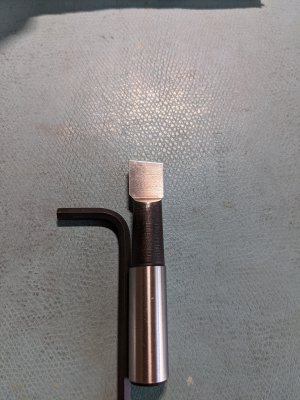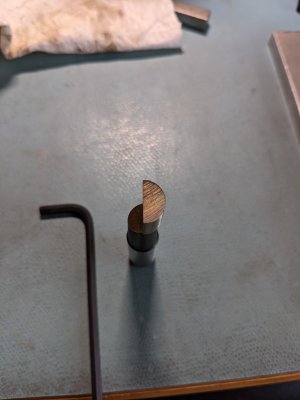- Joined
- Dec 18, 2019
- Messages
- 7,429
These bits seem to be ground as a D with the D being equal to the radius plus maybe 0.006". The bit is round with no additional relief under the cutting edge. Is there anything that can be done to make them cut better? (Besides lowering the speed to the correct SFM for the material!)


This is one of the bits as received. Haven't honed it or altered it in any way. So these tool bits don't really have any relief under the cutting edge. Am I interpreting that correctly? Cutting tip is on the top of the 2nd photo.


This is one of the bits as received. Haven't honed it or altered it in any way. So these tool bits don't really have any relief under the cutting edge. Am I interpreting that correctly? Cutting tip is on the top of the 2nd photo.
